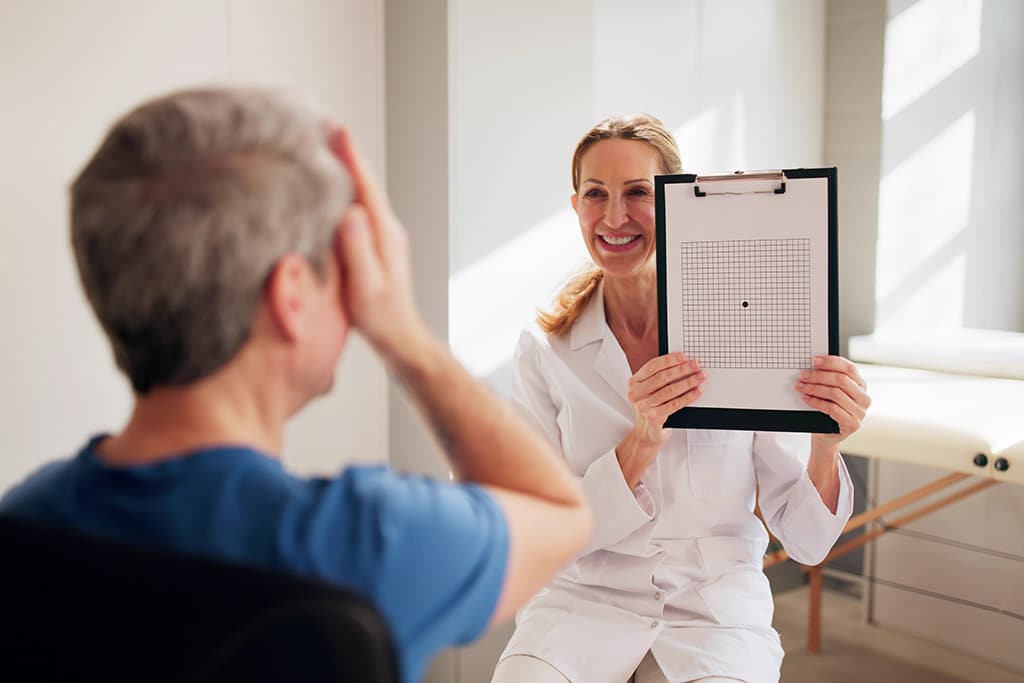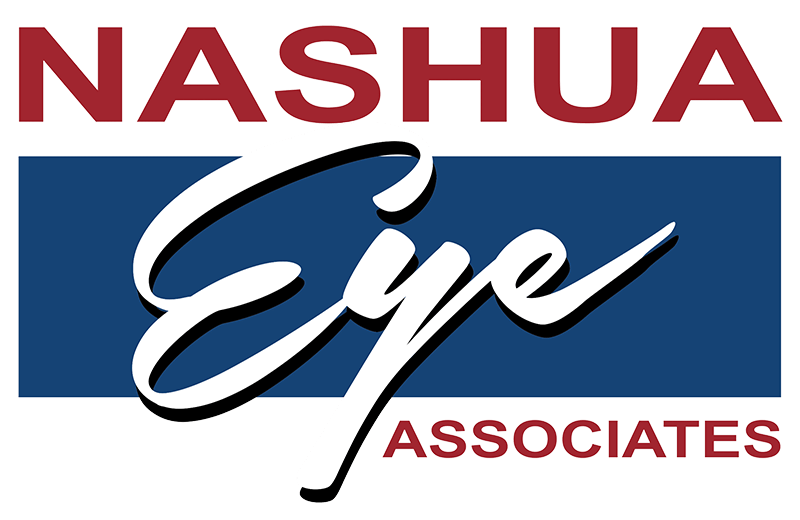Home » Services » Retina
Retina
Retina Services
Expert vitreoretinal services are available at Nashua Eye with Dr. Jeffrey Marx, Dr. Fina Barouch, and Dr. Kendra Klein. These Lahey Clinic specialists see patients at Nashua Eye Associates approximately once a week. They provide examinations and advanced treatments for retinal diseases, such as macular degeneration, diabetic retinopathy, and retinal detachment.
Macular degeneration is one of the most common causes of profound vision loss in the industrialized world. Risks factors for macular degeneration include advancing age, smoking, and a family history of the disease. Remarkable advancements in treatment have been made in the last few years. The advancements include medication and laser treatment. Dr. Marx, Dr. Barouch, and Dr. Klein are highly knowledgeable and skilled in the treatment of macular degeneration; and, in fact, have been involved in the experimental research to develop new treatments at the Lahey Clinic.
Patients with diabetes mellitus are at risk for developing visual loss from diabetic retina damage, called “diabetic retinopathy”. In addition to maintaining healthy blood sugar levels, all diabetic patients are recommended to have a yearly eye examination. Patients with advanced diabetic retina disease may benefit from treatment from a vitreoretinal specialist.
Retinal detachment can cause serious vision loss. It is important to know the symptoms of a potential retina detachment: they are a sudden increase in spots or “floaters”, flashing lights in the peripheral vision, or a worsening darkening of the peripheral vision. If you have these symptoms let your eye doctor know. Our vitreoretinal specialists have excellent experience treating retinal detachments.
Nashua Eye Associates is proud to provide the services of vitreoretinal specialists. State-of-the-art retinal examinations, diagnostic tests, and treatments are available conveniently in Nashua.
Retinal examination: Indirect Ophthalmoscopy
A retinal examination — sometimes called ophthalmoscopy or funduscopy — allows your doctor to evaluate the back of your eye, including the retina, the optic disk and the underlying layer of blood vessels that nourish the retina (choroid). Usually, before your doctor can see these structures, your pupils must be dilated with eye drops that keep the pupil from getting smaller when your doctor shines light into the eye.
After administering eyedrops and giving them time to work, your eye doctor may use one or more of these techniques to view the back of your eye:
Retina Articles
Nashua Eye is excited to welcome Kendra Klein, MD. Dr. Klein is a medical retina specialist on staff at Lahey Ophthalmology. She sees patients on the second floor of our Nashua office. As a medical retina specialist, she specializes in diagnsosis and treatment of macular degeneration, diabetic retina disease, and other non-surgical diseases of the retina. Dr. Klein…





